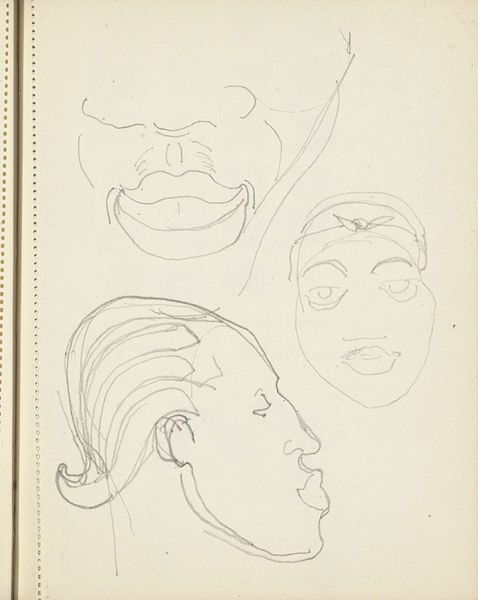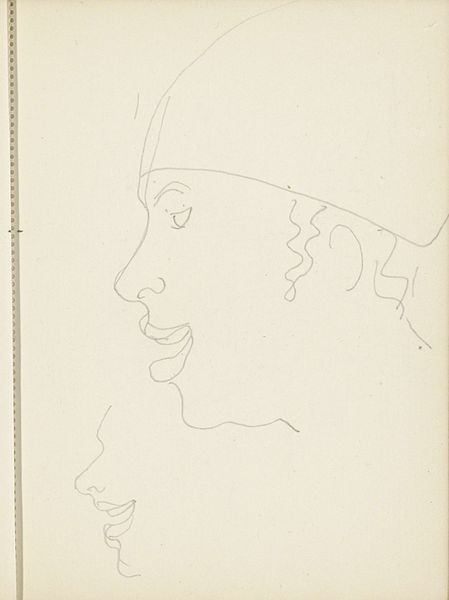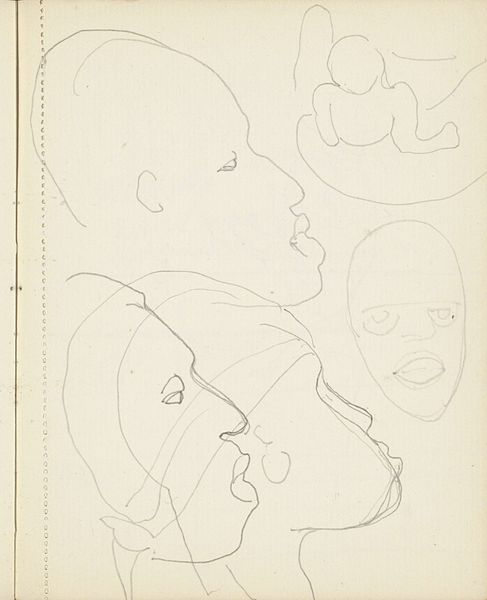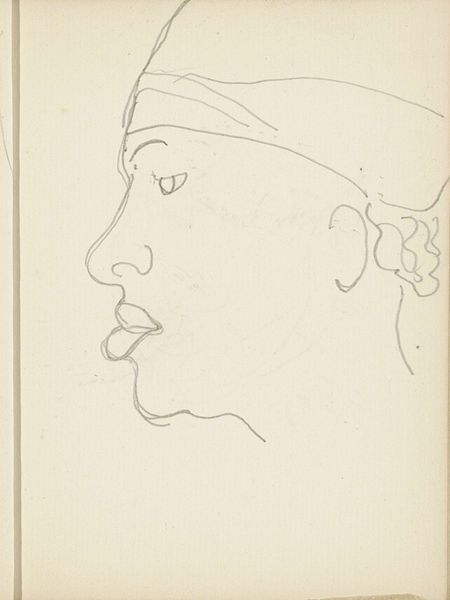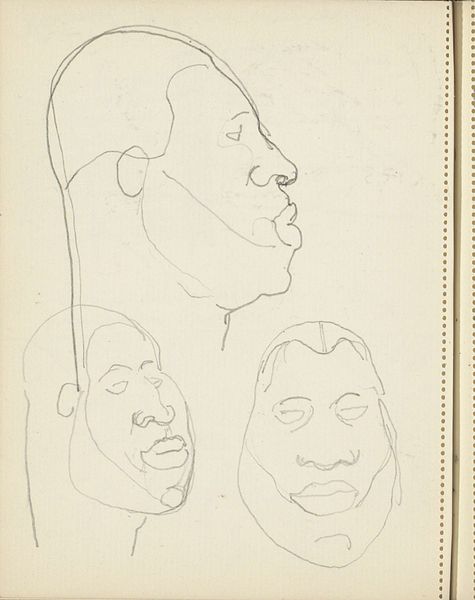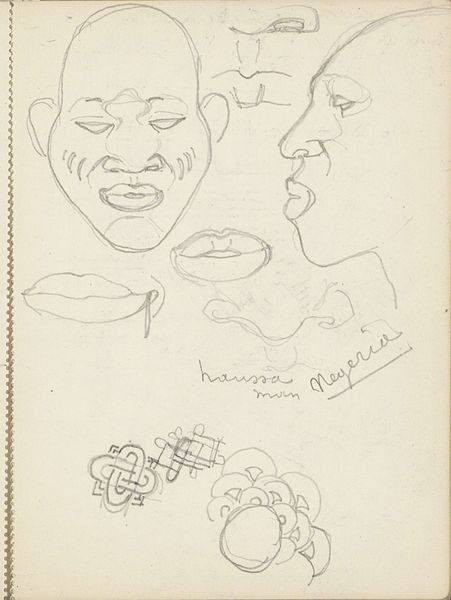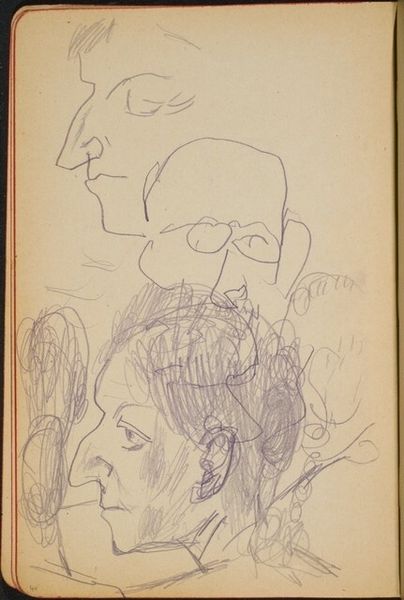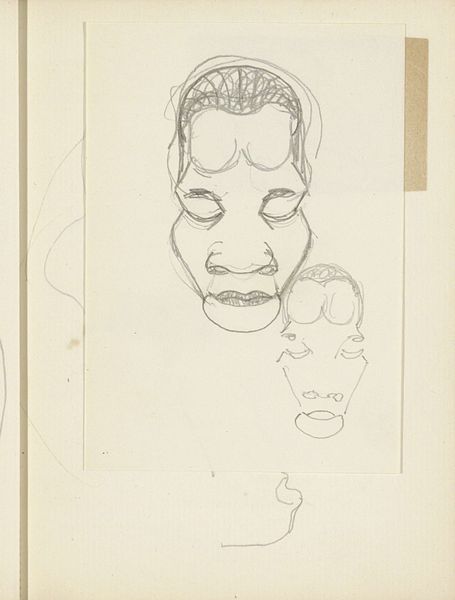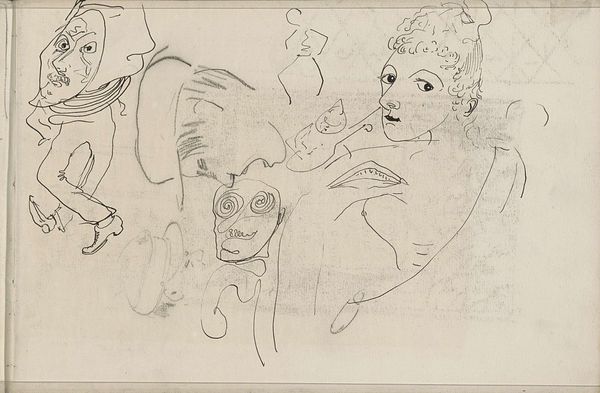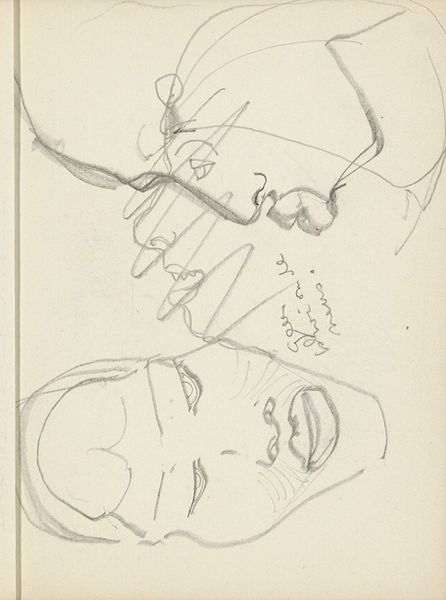
drawing, pencil
#
portrait
#
drawing
#
comic strip sketch
#
imaginative character sketch
#
light pencil work
#
figuration
#
personal sketchbook
#
idea generation sketch
#
ink drawing experimentation
#
pencil
#
line
#
sketchbook drawing
#
portrait drawing
#
storyboard and sketchbook work
#
sketchbook art
Copyright: Rijks Museum: Open Domain
Curator: Here at the Rijksmuseum, we're looking at a compelling page from Reijer Stolk’s sketchbook, titled “Hoofden van Afrikaanse mannen en vrouwen,” created sometime between 1916 and 1945. What are your initial thoughts on seeing these pencil drawings? Editor: Raw. That's the first word that comes to mind. There's a vulnerability in these sketches, as though we're peeking into the artist’s most private explorations. The lack of definitive lines actually adds to the feeling. Curator: Indeed. I see Stolk wrestling with representation itself. Consider the open mouths in some of the drawings, or the headwear on the top figure: are these symbols referencing a particular community or simply figments of artistic interpretation? Editor: It strikes me that this piece likely has strong connections to broader historical narratives of the era. Given the time period, the depiction of African individuals through a Western lens carries heavy implications, pointing to prevalent colonial attitudes and the dynamics of power in visual culture. Curator: Precisely. How do these quick portraits reinforce or subvert stereotypical depictions, especially when exhibited within a major national institution like this one? Editor: Looking closely, you can see attempts to capture nuance despite the sketch-like quality. There's an inherent tension between objectification and individual recognition here, isn’t there? It prompts us to confront uncomfortable histories of representation. Curator: Absolutely. Beyond the historical context, do these faces evoke specific emotions or states of mind? Editor: There’s a pensiveness in some faces, a hint of melancholy perhaps. They seem caught between worlds: Stolk's artistic world, and the historical reality of that time. That they appear unfinished also amplifies that emotion for me. Curator: Yes, this work allows us to consider the role of sketches within art history. Should they be seen as less 'valuable' because of their unfinished nature, or does their spontaneity offer a more direct link to the artist's thoughts and intentions? Editor: Their unrefined nature is where their value lies; the piece avoids a high-status portrait setting that offers some raw honesty. It’s through displaying works like this that we acknowledge and address challenging aspects of the past and initiate critical dialogues within our present. Curator: I find that notion very insightful. By grappling with the sketch’s inherent ambiguities, we begin to see not just what’s on the paper, but also what's behind it – a glimpse into how perception and artistic representation are inevitably shaped by the forces of history. Editor: Well said. These rapid sketches seem to be about initiating crucial discussions and sparking crucial questions about our cultural values.
Comments
No comments
Be the first to comment and join the conversation on the ultimate creative platform.
